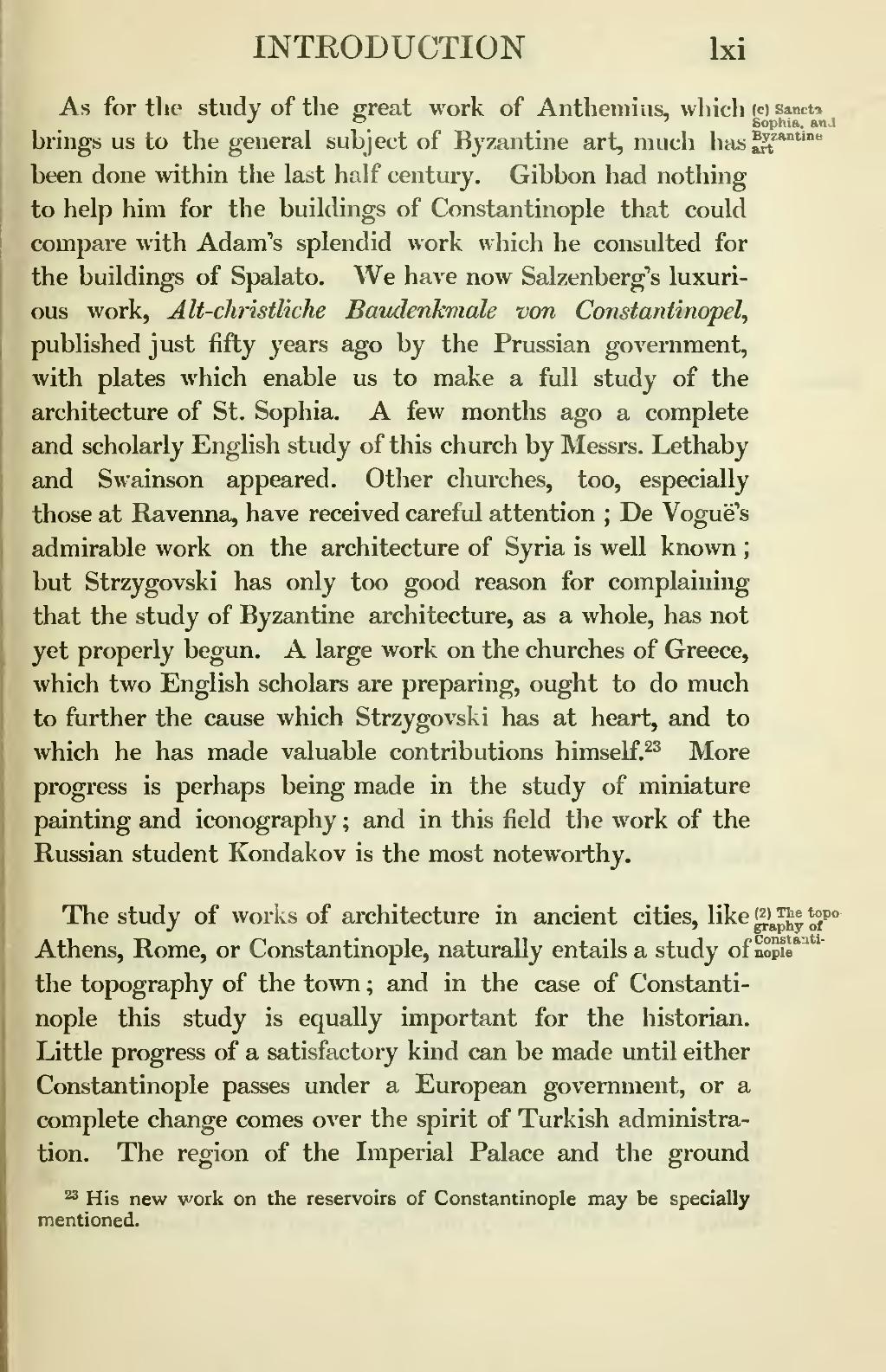(c) Sancto Sophia, and Byzantine art As for the study of the great work of Anthemius, which brings us to the general subject of Byzantine art, much has been done within the last half century. Gibbon had nothing to help him for the buildings of Constantinople that could compare with Adam's splendid work which he consulted for the buildings of Spalato. We have now Salzenberg's luxurious work, Alt-christliche Baudenkmale von Constantinopel, published just fifty years ago by the Prussian government, with plates which enable us to make a full study of the architecture of St. Sophia. A few months ago a complete and scholarly English study of this church by Messrs. Lethaby and Swainson appeared. Other churches, too, especially those at Ravenna, have received careful attention; De Vogue's admirable work on the architecture of Syria is well known; but Strzygovski has only too good reason for complaining that the study of Byzantine architecture, as a whole, has not yet properly begun. A large work on the churches of Greece, which two English scholars are preparing, ought to do much to further the cause which Strzygovski has at heart, and to which he has made valuable contributions himself.[1] More progress is perhaps being made in the study of miniature painting and iconography; and in this field the work of the Russian student Kondakov is the most noteworthy.
(2) The topography of Constantinople The study of works of architecture in ancient cities, like Athens, Rome, or Constantinople, naturally entails a study of the topography of the town; and in the case of Constantinople this study is equally important for the historian. Little progress of a satisfactory kind can be made until either Constantinople passes under a European government, or a complete change comes over the spirit of Turkish administration. The region of the Imperial Palace and the ground
- ↑ His new work on the reservoirs of Constantinople may be specially mentioned.
